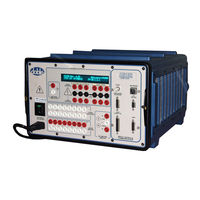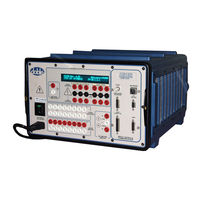User Manuals: doble F6150 Protective Relay Tester
Manuals and User Guides for doble F6150 Protective Relay Tester. We have 3 doble F6150 Protective Relay Tester manuals available for free PDF download: User Manual
doble F6150 User Manual (228 pages)
Power System Simulators
Brand: doble
|
Category: Power Supply
|
Size: 46 MB
Table of Contents
Advertisement
doble F6150 User Manual (128 pages)
Power System Simulators
Brand: doble
|
Category: Power Supply
|
Size: 5 MB
Table of Contents
doble F6150 User Manual (21 pages)
Power System Simulators
Brand: doble
|
Category: Power Supply
|
Size: 1 MB
Table of Contents
Advertisement
Advertisement


